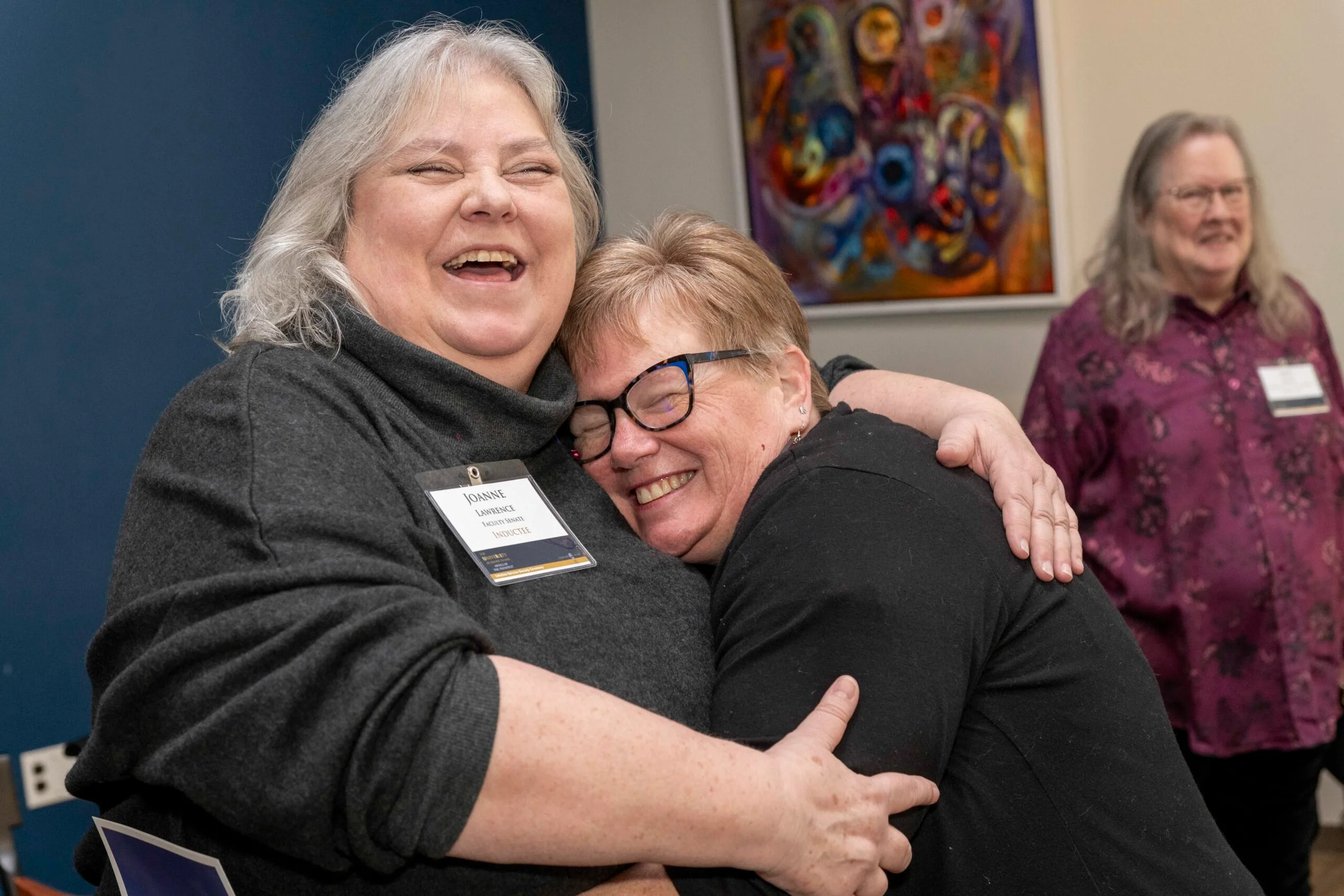The University of Rhode Island has inducted retiring faculty and staff members into the Lifetime Service Society to honor their dedication and passion for the university for the past decade.
URI honors those who have spent 40 years or more of their work lives in service to the school and community in an annual ceremony. Society inductees are given a brick with their name and years of service engraved into it. They also receive certificates of appreciation from URI, Sens. Jack Reed and Sheldon Whitehouse, Rep. Seth Magaziner and Gov. Dan McKee.
This year’s inductees are: Richard Anderson, William Euler, Heather Faubert, Paul Florin, Arthur Gold, Joanne Lawrence, Craig Louzon, Jane Miner, David Nelson, Peter Nightingale and Stuart Westin.
As business manager of the Narragansett Bay Campus and the Graduate School of Oceanography, Jane Miner was an integral part of the URI community, according to David Smith, a professor of oceanography who introduced her. Miner was a part of the GSO for almost the entirety of its history.
Miner graduated from Clark University with a degree in environmental science and started working at the almost-completely-established Coastal Resources Center at the GSO in 1977. Out of all 11 inductees, Miner has the longest employment history, totaling 47 years.
“It’s nice to be recognized by the university officially for the years that I was here,” Miner said. “I fell in love with it.”
Gold is a 40-year professor emeritus in the department of natural resources science and a past department chair. He was allotted over $30 million in national grants and received the URI Foundation and Alumni Engagement Scholarly Excellence Award, which is the highest award for research at URI.
Gold had a variety of successful projects at URI, including the investigation of the effects of land use and natural features on water quality and river flow regimes, according to natural resources science professor Pete Paton, who introduced him. Gold was the senior advisor on watershed research to the United Nations for about five years.
“He’s a dear friend and a great professor who I’ve known for 30 years,” Paton said.
Faubert, a member of the URI community for 42 years, was a research assistant in the department of plant sciences and entomology. Lisa Tewksbury, a research associate and adjunct professor in Faubert’s department, introduced her.
During Faubert’s time at URI, Faubert started a pest management program that helped local potato growers, according to Tewksbury. She expanded the program to include fruit tree growers, nurseries, greenhouses and vineyards.
Joanne Lawrence, an employee of URI for 42 years, worked in the College of Arts and Sciences Dean’s Office, the Office of Enrollment Services and with the faculty senate. She was awarded the URI Foundation University Staff Excellence Award in 2004 and played a fundamental role in assisting students needing advice on graduation, staff looking for curriculum requirements and deans needing institutional information.
Retiring from his position as grounds superintendent, Craig Louzon was one of the first grounds workers to complete courses on the Kingston Campus. He assisted in preparing the campus for the commencement ceremony and keeping the campus open during severe weather. He was introduced by Mike McDonald, who is the landscape maintenance technician of the landscape and grounds department. Louzon will end his time at URI with 40 years of service.
“He is a man of integrity, a family man, an earnest man, a thinker who always enjoys friendly debate,” McDonald said.
Professor of molecular biology and biochemistry David Nelson was chairman of his department. He was passionate about research and securing the means to fund it, according to Jay Sperry, who introduced him. He also found enjoyment in helping all students and fellow professors. He served the university for 42 years.
Peter Nightingale was a professor of physics and was named a fellow of the American Physical Society, which is awarded to fewer than 1% of members, according to Sperry. He also co-authored a publication cited by the Nobel Prize committee in awarding the Nobel for physics. He was part of the URI community for 40 years.
The ceremony concluded with the unveiling of the engraved bricks, which can be found in the patio of the Robert L. Carothers Library & Learning Commons.

